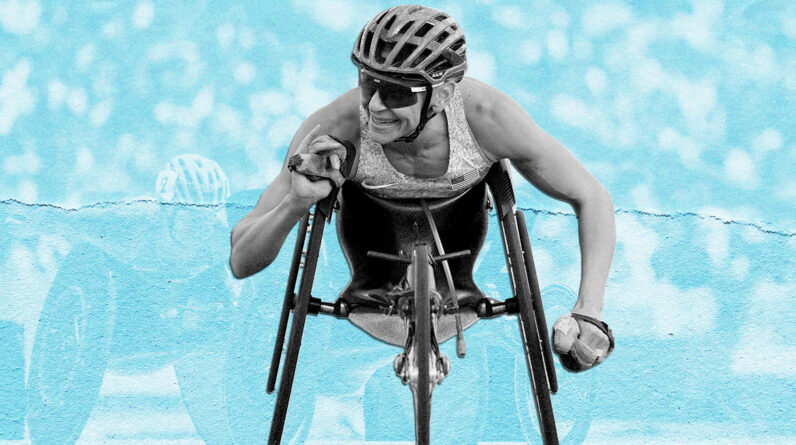
Walking can not only add years to your life, but life to your years, enhancing everyday energy and boosting mood with every step you take. So, lace up your walking shoes and let’s dive into how this simple exercise can lead you down a path to a longer, healthier life.
10 benefits of walking that will put a spring in your step
1. Linked to longevity
Walking is more than just a way to get around; research shows it’s a key factor in living a longer life. July 2020 BMJ research reports that even leisurely walking, when done regularly, can extend life expectancy by countering the effects of sedentary lifestyles. And a July 2020 analysis in The Lancet Global Health had similar results for a worldwide test group.
It’s particularly important as you get older. The JAMA Network Open also reported that older adults who engage in regular walking report better health and slower aging compared to their less active counterparts.
While you’re at it, why not pick up the pace? A June 2019 study from the BMJ indicated that faster walking speeds are associated with a significantly reduced risk of dying from cardiovascular diseases.
2. Improves heart health
There’s a reason the American Heart Association5 strongly recommends taking regular walks: Walking is a triple threat when it comes to protecting your heart health, helping to lower blood pressure6, improve cholesterol levels7, and stabilize blood sugar.
August 2023 research in the British Journal of Sports Medicine shows that walking at a moderate pace can help reduce the risk of developing coronary heart disease and enhance overall cardiovascular resilience.
And a November 2017 study in the European Heart Journal highlights that regular walking can significantly decrease the risk of cardiovascular incidents, such as heart attacks and strokes, by improving blood circulation and cardiac function.
3. Fights fatigue and increases energy
Walking is a natural energizer that can help increase your stamina and reduce fatigue. May 2017 research in Physiology and Behavior indicates that regular, low-intensity stair walking increases blood flow and oxygen supply, which helps enhance overall alertness and energy. They even said it was more effective than caffeine!
And a July 2018 Health Promotion Perspectives study reveals that engaging in regular walking sessions can significantly improve physical energy and vitality, likely due to the release of endorphins, often known as “feel-good” hormones that naturally elevate mood and energy levels.
4. Promotes gut health
Regular walking, especially after meals, promotes better gut motility and contributes to overall digestive wellness. Walking also has a significant positive impact on digestion.
May 2023 research in the Medicine and Science in Sports and Exercise demonstrates that breaking up prolonged periods of sitting with short walking breaks can enhance digestive health and function.
This study found that intermittent walking stimulates the muscles used in the gastrointestinal tract, aiding in the faster and more efficient breakdown and absorption of food. This can help alleviate common digestive issues such as bloating, constipation, and abdominal discomfort.
5. Maintains joint health
Walking plays a crucial role in maintaining joint health, as it gently stresses the joints, promoting better circulation and distribution of joint fluid and reducing the risk of stiffness.
According to a May 2019 study in the American Journal of Preventative Medicine, regular walking helps to reduce pain and improve function in individuals with arthritis. And another study from April 2019 in BMC Musculoskeletal Disorders found that walking can enhance knee joint lubrication and function, slowing the progression of osteoarthritis.
6. Reduces symptoms of depression and anxiety
The benefits of walking go beyond the physcial—walking can be a powerful tool in the fight against depression. A January 2019 study in JAMA Psychiatry found that moderate-intensity exercise, including walking, has significant antidepressant effects.
The researchers noted that 35 minutes of walking daily could significantly reduce the risk of developing major depression by helping to modulate stress hormones and increase endorphin production.
Additionally, December 2018 research in the International Journal of Environmental Research and Public Health further supports these findings, suggesting that regular walking increases the volume of brain regions involved in mood regulation, such as the hippocampus, potentially mitigating symptoms of depression.
Walking can also significantly decrease anxiety symptoms by promoting relaxation and reducing stress hormone levels in the body, according to a May 2018 study in Behavioral Sciences.
Lastly, a September 2019 study from Scientific Reports adds that walking not only improves brain function but also significantly enhances mood and mental well-being.
7. Boosts brain health
Walking regularly isn’t just good for the body; it’s also beneficial for the brain. Moderate-intensity walking can significantly slow cognitive decline in adults by enhancing blood flow to the brain, according to an October 2018 study in Neurology.
And July 2020 research from the British Journal of Sports Medicine reports that walking enhances neural connectivity and promotes neuroplasticity, which plays a crucial role in the maintenance of cognitive functions.
Additionally, a landmark study from July 2017 in The Lancet indicates that regular physical exercise, including walking, can reduce the risk of developing Alzheimer’s disease by up to 50 percent. Further findings from September 2022 JAMA Neurology reveal that walking contributes to greater cortical thickness, thus potentially delaying the onset of dementia.
8. Relieves lower back pain
If you have back pain, walking is a great option to stay active and pain-free, according to March 2019 research in Disability and Rehabilitation. The study indicated that low-impact aerobic walking can significantly reduce the severity of pain and enhance functional ability in those with chronic lower back pain.
Walking promotes circulation, reduces stiffness, and strengthens the muscles that support the spine, all of which contribute to pain reduction and a quicker recovery.
9. Supports healthy body composition
This gentle yet effective form of exercise also supports overall metabolic functions, which are crucial for long-term weight management and health.
Case in point: A September 2014 study in the Journal of Exercise Nutrition and Biochemistry found that regular walking helps reduce body fat and improve obesity-related markers.
10. Improves sleep quality
Enjoy deeper, more refreshing sleep by walking daily. Regular walking enhances circadian rhythms, promotes relaxation, and decreases symptoms of insomnia and anxiety, which are often barriers to good sleep.
A study in Sleep Health found that moderate-intensity walking helps increase the duration of sleep and reduces the time it takes to fall asleep at night. Another study, detailed in the October 2016 issue of BMJ Open, supports these findings, indicating that daily walking not only improves sleep efficiency but also contributes to more restorative sleep patterns.
How to get started with a walking routine
All you really need to get going is a comfortable pair of walking shoes that provide good support and a safe place to walk, such as a neighborhood sidewalk, park trail, or even a treadmill.
Begin by planning to walk for at least 15 to 30 minutes at a time, three to five days a week. Eventually, you’ll want to aim for at least 30 minutes of walking five days a week, per the Physical Activity Guidelines for Americans. Walk at a pace that allows you to carry on a conversation comfortably—aka The Talk Test. This moderate pace ensures you’re moving briskly but not overexerting yourself.
As you grow more accustomed to your routine, gradually increase your duration by even by 2 to 5 minutes a week, suggests the Mayo Clinic. Then you can adjust variables like speed and terrain. Incorporate steep hills or rocky trails to challenge different muscle groups and boost your stamina (but only change one variable at a time in the beginning).
You’ll likely start to see some of the benefits of walking in no time, but tracking your progress with a pedometer or a fitness app can also motivate you by showing incremental achievements and encouraging you to set new personal bests. Or, try a Steps Challenge, like the one Well+Good hosts.
Well+Good articles reference scientific, reliable, recent, robust studies to back up the information we share. You can trust us along your wellness journey.
- Zhao, Min et al. “Recommended physical activity and all cause and cause specific mortality in US adults: prospective cohort study.” BMJ (Clinical research ed.) vol. 370 m2031. 1 Jul. 2020, doi:10.1136/bmj.m2031
- Strain, Tessa et al. “Use of the prevented fraction for the population to determine deaths averted by existing prevalence of physical activity: a descriptive study.” The Lancet. Global health vol. 8,7 (2020): e920-e930. doi:10.1016/S2214-109X(20)30211-4
- Inoue, Kosuke et al. “Association of Daily Step Patterns With Mortality in US Adults.” JAMA network open vol. 6,3 e235174. 1 Mar. 2023, doi:10.1001/jamanetworkopen.2023.5174
- Mok, Alexander et al. “Physical activity trajectories and mortality: population based cohort study.” BMJ (Clinical research ed.) vol. 365 l2323. 26 Jun. 2019, doi:10.1136/bmj.l2323
- American Heart Association: “Walking”
- Soroush, Ali et al. “Effects of a 6-Month Walking Study on Blood Pressure and Cardiorespiratory Fitness in U.S. and Swedish Adults: ASUKI Step Study.” Asian journal of sports medicine vol. 4,2 (2013): 114-24. doi:10.5812/asjsm.34492
- Williams, Paul T, and Paul D Thompson. “Walking versus running for hypertension, cholesterol, and diabetes mellitus risk reduction.” Arteriosclerosis, thrombosis, and vascular biology vol. 33,5 (2013): 1085-91. doi:10.1161/ATVBAHA.112.300878
- Garcia, Leandro et al. “Non-occupational physical activity and risk of cardiovascular disease, cancer and mortality outcomes: a dose-response meta-analysis of large prospective studies.” British journal of sports medicine vol. 57,15 (2023): 979-989. doi:10.1136/bjsports-2022-105669
- Yates, Thomas et al. “Association of walking pace and handgrip strength with all-cause, cardiovascular, and cancer mortality: a UK Biobank observational study.” European Heart Journal vol. 38,43(2017). 3232–3240. https://doi.org/10.1093/eurheartj/ehx449
- Randolph, Derek D, and Patrick J O’Connor. “Stair walking is more energizing than low dose caffeine in sleep deprived young women.” Physiology & behavior vol. 174 (2017): 128-135. doi:10.1016/j.physbeh.2017.03.013
- Edwards, Meghan K, and Paul D Loprinzi. “Experimental effects of brief, single bouts of walking and meditation on mood profile in young adults.” Health promotion perspectives vol. 8,3 171-178. 7 Jul. 2018, doi:10.15171/hpp.2018.23
- Duran, Andrea T et al. “Breaking Up Prolonged Sitting to Improve Cardiometabolic Risk: Dose-Response Analysis of a Randomized Crossover Trial.” Medicine and science in sports and exercise vol. 55,5 (2023): 847-855. doi:10.1249/MSS.0000000000003109
- Dunlop, Dorothy D et al. “One Hour a Week: Moving to Prevent Disability in Adults With Lower Extremity Joint Symptoms.” American journal of preventive medicine vol. 56,5 (2019): 664-672. doi:10.1016/j.amepre.2018.12.017
- Alghadir, Ahmad H et al. “Effect of 6-week retro or forward walking program on pain, functional disability, quadriceps muscle strength, and performance in individuals with knee osteoarthritis: a randomized controlled trial (retro-walking trial).” BMC musculoskeletal disorders vol. 20,1 159. 9 Apr. 2019, doi:10.1186/s12891-019-2537-9
- Choi, Karmel W et al. “Assessment of Bidirectional Relationships Between Physical Activity and Depression Among Adults: A 2-Sample Mendelian Randomization Study.” JAMA psychiatry vol. 76,4 (2019): 399-408. doi:10.1001/jamapsychiatry.2018.4175
- Song, Chorong et al. “Psychological Benefits of Walking through Forest Areas.” International journal of environmental research and public health vol. 15,12 2804. 10 Dec. 2018, doi:10.3390/ijerph15122804
- Ewert, Alan, and Yun Chang. “Levels of Nature and Stress Response.” Behavioral sciences (Basel, Switzerland) vol. 8,5 49. 17 May. 2018, doi:10.3390/bs8050049
- Opel, Nils et al. “White matter microstructure mediates the association between physical fitness and cognition in healthy, young adults.” Scientific reports vol. 9,1 12885. 9 Sep. 2019, doi:10.1038/s41598-019-49301-y
- Reinholdsson, Malin et al. “Prestroke physical activity could influence acute stroke severity (part of PAPSIGOT).” Neurology vol. 91,16 (2018): e1461-e1467. doi:10.1212/WNL.0000000000006354
- Wheeler, Michael J et al. “Distinct effects of acute exercise and breaks in sitting on working memory and executive function in older adults: a three-arm, randomised cross-over trial to evaluate the effects of exercise with and without breaks in sitting on cognition.” British journal of sports medicine vol. 54,13 (2020): 776-781. doi:10.1136/bjsports-2018-100168
- Livingston, Gill et al. “Dementia prevention, intervention, and care.” Lancet (London, England) vol. 390,10113 (2017): 2673-2734. doi:10.1016/S0140-6736(17)31363-6
- Del Pozo Cruz, Borja et al. “Association of Daily Step Count and Intensity With Incident Dementia in 78 430 Adults Living in the UK.” JAMA neurology vol. 79,10 (2022): 1059-1063. doi:10.1001/jamaneurol.2022.2672
- Vanti, Carla et al. “The effectiveness of walking versus exercise on pain and function in chronic low back pain: a systematic review and meta-analysis of randomized trials.” Disability and rehabilitation vol. 41,6 (2019): 622-632. doi:10.1080/09638288.2017.1410730
- Hong, Hye-Ryun et al. “Effect of walking exercise on abdominal fat, insulin resistance and serum cytokines in obese women.” Journal of exercise nutrition & biochemistry vol. 18,3 (2014): 277-85. doi:10.5717/jenb.2014.18.3.277
- Sullivan Bisson, Alycia N et al. “Walk to a better night of sleep: testing the relationship between physical activity and sleep.” Sleep health vol. 5,5 (2019): 487-494. doi:10.1016/j.sleh.2019.06.003
- Hori, Hikaru et al. “Does subjective sleep quality improve by a walking intervention? A real-world study in a Japanese workplace.” BMJ open vol. 6,10 e011055. 24 Oct. 2016, doi:10.1136/bmjopen-2016-011055
- National Association of Sports Medicine: “THE TALK TEST: AN UNDERRATED FITNESS TOOL FOR PERSONAL TRAINERS”
- U.S. Department of Health and Human Services: “Physical Activity Guidelines for Americans, 2nd edition”







